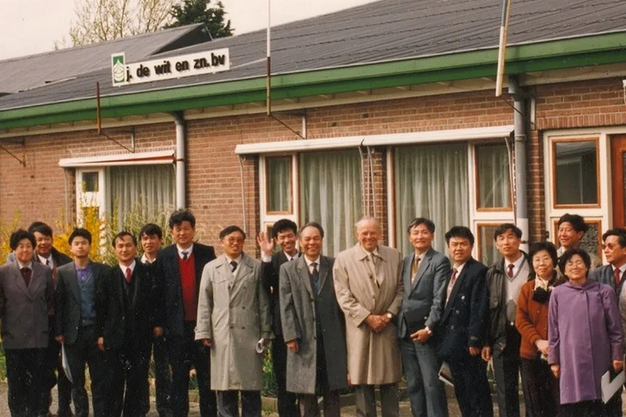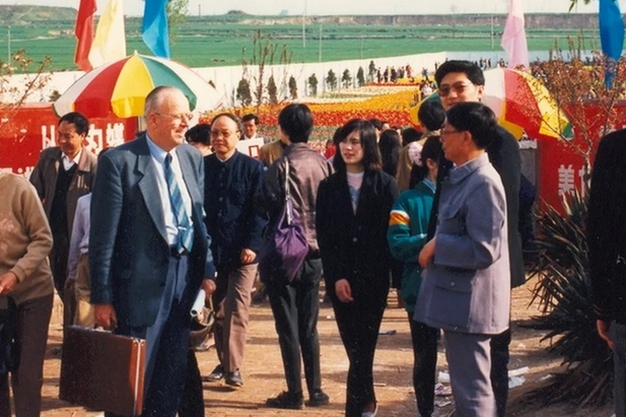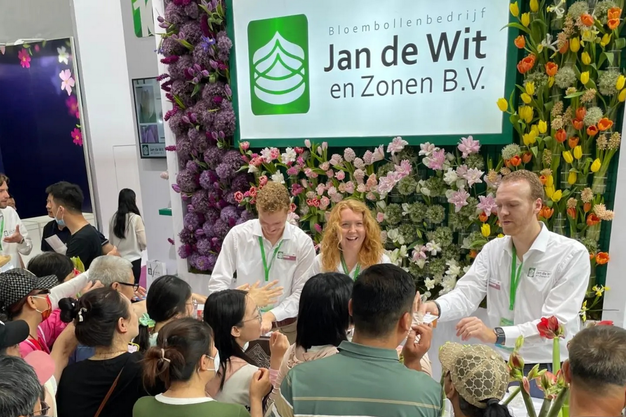"We have been in China for 40 years, and we believe that there are many years to come," says Jan de Wit from Jan de Wit en Zonen B.V. This Dutch company specializes in the export, preparation, and cultivation of flower bulbs. Mostly tulips and lily bulbs, but also other flower bulbs such as hyacinths, irises, and hippeastrum. In this article, he gives an overview of the way in which the company and the Chinese flower market developed over the course of time.

How it all began
As indicated by the company name, Jan de Wit en Zonen B.V. is a true family business.In 1922, Jan de Wit, his 7 sons (zonen), and 9 cousins established the business. Today, it's run by the fourth generation. And in the meantime the company has entered the Chinese market.
Jan tells us how this story began in 1984, saying: "It all started with a request from Hebei University in Shijiazhuang which requested tulips via Sluis en Groot (now Syngenta). The tulips were grown by Mr. Li Zhanren in the Taihang Shan. My father, Arie, always looked out for new markets.

Communication was through letters sent by airmail, translated by the owner of our local Chinese restaurant in Enkhuizen, the Netherlands. It took at least 6 weeks to receive a response. Our first visit to China was in 1988. By 1996, we were supplying tulips for the China Tulip Festival across 12 parks in China. Now in 2024, our tulips can be found in many Chinese cities."

Change
Jan points out that China and the Chinese flower market considerably changed over the years. "Every time that we visited China, the country looked completely different. I still remember the first time: highways were absent, and there were many construction sites. Nowadays, highways and high buildings are everywhere, it's absolutely amazing."
He also finds that the flower market changed a lot: "An obvious change is that demand has shifted from red and yellow tulips to pink and white tulips. The young generation prefers soft colors. We introduced the pink Double Surprise as the first double oriental in China and the world. Since 2021, our tulip cut flower production program runs from December to May, expanding beyond the Chinese New Year. In 2002, we successfully introduced the oriental lilies Siberia and Sorbonne in China. The acreage was large, prices dropped, and it was an instant success."
He adds that influencers and social media platforms (such as WeChat and TikTok) have an increasingly important role in the floral business.
Relationships
Throughout the years, Jan also learned that it's important to pay attention to relationships and when doing business in China. "China is a very huge market but also a complicated market. In this country, relationship are very important. We have been doing business with many partners for decades, always with a long-term focus."

"We are looking forward to having more cooperation and engagement with our Chinese friends. Currently, my son is also learning Chinese in Shanghaij," he concludes.
For more information:
Jan de Wit en Zonen B.V.
+31 (0)228 312571
[email protected]
www.jandewitenzonen.com










